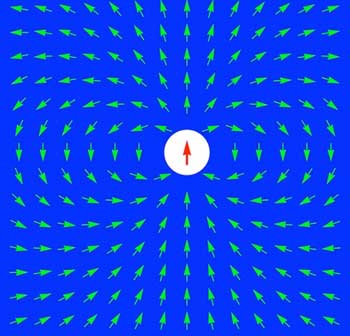| Posted: Dec 14, 2017 |
Long-ranged patterns formed in water and magnets
(Nanowerk News) Modern science and technology has developed new types of matter with unfamiliar and occasionally useful properties. The materials known as “spin ice” offer a completely new type of magnetism, including currents of magnetic charges or “monopoles” and hence a magnetic equivalent of electricity – “magnetricity”.
|
|
The “spins” that form “spin ice” are like atom-sized compass-needles that may be represented as arrows. The “ice” in “spin ice” refers to a deep theoretical connection with the properties of familiar ice, or solid water, H2O. If one were to place a hydrogen atom (H) on the end of every spin arrow in ice, then one would generate a pattern of H-atoms in water ice.
|
|
New research (Nature Communications, "Harmonic phase in polar liquids and spin ice") at the London Centre for Nanotechnology and Department of Physics & Astronomy, UCL, has revealed a further deep connection between the properties of spin ice ice and those of water in its more important liquid state, so crucial to life on earth.
|
 |
| How a central molecule in a polar liquid such as water, or a spin in spin ice, orients the other molecules or spins around it. (Image: LCN)
|
|
Water is a so-called “polar liquid” – each water molecule is an electrical dipole, with a positive charge at one end and a negative charge at the other. This is revealed, for example, when a stream of tap water is deflected by a pen that has been charged with static electricity. However, the dipoles in polar liquids like water do not point in random directions but in fact form subtle patterns over extremely long distances.
|
|
The new research has shown that the same long-ranged patterns that form in polar liquids are also formed by the spins in spin ice. In both cases the patterns are described mathematically by so-called “harmonic” functions. Hence polar liquids, including water, and spin ice have been collectively referred to as “harmonic” phases. Here a “phase” is a term used to describe different portions of matter that share the same property.
|
|
The author of the work, LCN Professor Steve Bramwell, comments “it's remarkable to discover that the same long-ranged patterns form in an exotic magnet—spin ice—and in polar liquids such as water: this should help us to predict new properties of both types of material.”
|
|
The patterns formed by the molecular dipoles in polar liquids and the spins in spin ice can be visualised if one imagines oneself “sitting” on a particular dipole or spin. Then the pattern looks like the familiar pattern of iron filings that forms around a bar magnet. As the central dipole or spin moves, then this pattern moves with it.
|

